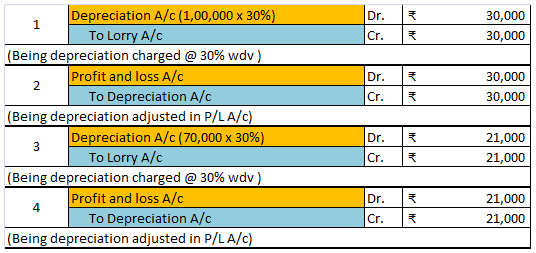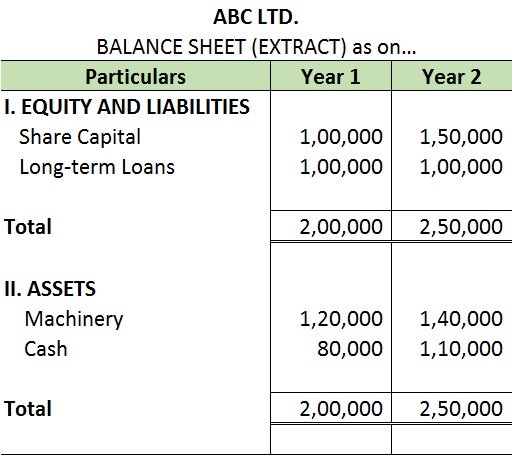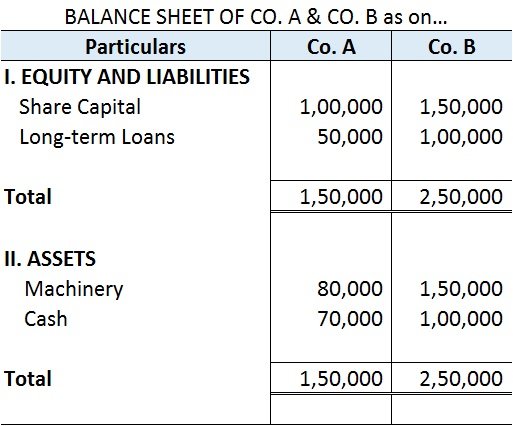Liabilities are obligations which a business owes to external or internal parties.As per the accounting equation liabilities are equal to the difference between assets and capital. Total Outside Liabilities in relation to the Borrower can be all secured and unsecured loans, including current liabilRead more
Liabilities are obligations which a business owes to external or internal parties.As per the accounting equation liabilities are equal to the difference between assets and capital.
Total Outside Liabilities in relation to the Borrower can be all secured and unsecured loans, including current liabilities of the Borrower.
External Liability or outside liability is an obligation which a business has to pay back to external parties i.e. lenders, vendors, government, etc. Payable to Sundry creditors for the supply of any goods for the business or payable to any contractors for receiving any services or payable to the Govt. or other departments for any statutory payments like taxes or other levies. All these liabilities are known as an external liability to the business and are shown on the liability side of the Balance sheet after charging into the profit & loss account of that period.
Where, Internal Liability – All obligations which a business has to pay back to internal parties such as promoters, employees, etc. are termed as internal liabilities. Example – Capital, Salaries, Accumulated profits, etc.
Example – Borrowings, Creditors, Taxes, etc.
Where, 1) Person A takes a loan from person B (person not associated with the company), person B is an external liability to person A.
2) Person A has a tax liability of Rs.1000, here the government is an external liability to whom A has to pay the liability amount.
3) Person A got goods on credit from person C for 60 days, C is an external liability to A, which A has to pay within the time period.
See less




Capital Redemption Reserve is a statutory reserve, which means it is mandatory for a company to create such reserve when it decides to redeem its preference shares. Capital Redemption Reserve cannot be utilised for any purpose other than the issue of bonus shares. Now let’s understand the reason behRead more
Capital Redemption Reserve is a statutory reserve, which means it is mandatory for a company to create such reserve when it decides to redeem its preference shares. Capital Redemption Reserve cannot be utilised for any purpose other than the issue of bonus shares.
Now let’s understand the reason behind it.
We know preference shares are those shares that carry some preferential rights:
Also, unlike equity shares, preference shares are redeemable i.e. repaid after a period of time (which cannot be more than 20 years).
Generally, the creditors of a company have the right to be repaid first. So, in event of redemption of preference shares, the preference shareholders are repaid before creditors and the total capital of the company will but the total debt of the company is unaffected.
The gap between the debt and equity of the company will further widen and this will also increase the debt-equity ratio of the company. It will be perceived to be a risky scenario by the creditors and lenders of the company because the
So to protect the creditor and lender, Section 55 of the Companies Act comes to rescue.
Section 55 of the Companies Act ensure that the creditors and lenders of a company do not find themselves in a riskier situation when the company decides to redeem its preference shares by making it mandatory for a company to either
OR
OR
This will fill up the void created by the redemption of preference shares and the debt-equity ratio will remain unaffected. Keeping an amount aside in Capital Redemption Reserve ensures that such amount will not be used for dividend distribution and capital will be restored because it can be only used to issue bonus shares.
In this way the debt-equity ratio remains the same, the interest of the creditors and lenders secured.
Bonus shares are fully paid shares that are issued to existing shareholders at no cost.
Let’s take a numerical example for further understanding:
ABC Ltd wants to redeem its 1,000 9% Preference shares at a face value of Rs 100 per share. It has decided to issue 8,000 equity shares @Rs 10 per share and use the profit and reserves to fund the deficit.
The journal entries will be as follows:
Working note: Rs
9% preference shares due for redemption (1,000 x 10) – 1,00,000
Less: Amount of new shares issued (8,000 x 10) – 80,000
Amount to be transferred to CRR 20,000
Hence, the reduction of total capital by Rs 1,00,000 due to the redemption of preference shares is reversed by issuing equity shares of Rs 80,000 and creating a Capital Redemption Reserve of Rs 20,000.
See less